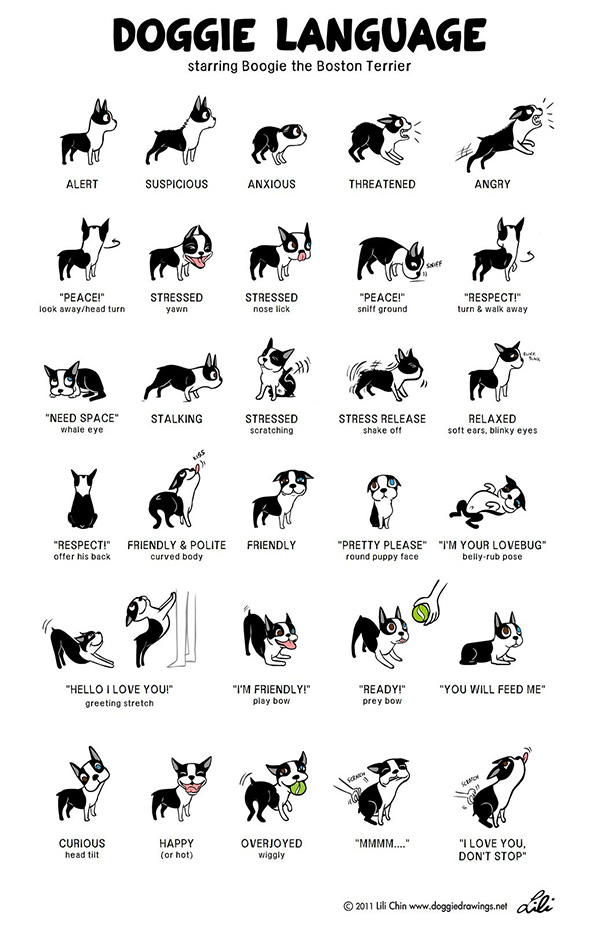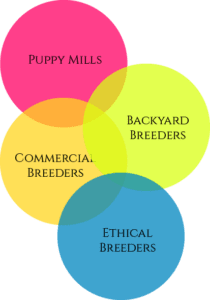Key Takeaways
-
Dogs and cats use body language to communicate, but they have different signals that can lead to misunderstandings.
-
Dogs often use tail wagging, barking, and specific postures to express emotions, while cats rely on tail flicks, meows, and ear positions.
-
Recognizing the shared signals, such as blinking and yawning, can help improve interspecies communication.
-
Training and supervised interactions can enhance understanding between dogs and cats.
-
Observing and interpreting interactions can prevent conflicts and promote a harmonious relationship.
Do Dogs and Cats Understand Each Other’s Body Language?
Understanding the body language of dogs and cats can be a game-changer in fostering a peaceful household. These two species communicate in unique ways, and recognizing these signals can help us better manage their interactions. While dogs and cats might not fully understand each other’s body language, they do share some common signals that can bridge the gap. For more insights, you can explore dogs that are good with cats.

“Introducing Dogs to Cats – American …” from www.americanhumane.org and used with no modifications.
Understanding Communication Signals
Dogs and cats both use a combination of body language, vocalizations, and facial expressions to communicate. However, their methods and meanings often differ. For example, a wagging tail in dogs usually signifies happiness, while in cats, it can indicate irritation. Understanding these differences is key to preventing misunderstandings.
Importance of Body Language in Pets
Body language is crucial for pets as it allows them to express their emotions and intentions. This non-verbal communication helps them interact with other animals and humans effectively. Here are some reasons why body language is important:
-
It helps pets convey their feelings without vocalizing.
-
It aids in establishing social hierarchies and boundaries.
-
It prevents conflicts by signaling submission or aggression.

“Understanding Canine Body Language …” from www.pawcommons.com and used with no modifications.
Dog Communication Signals
Dogs have a rich repertoire of signals that they use to communicate with each other and with humans. Understanding these signals can help us better interpret their needs and emotions.
Common Dog Signals and Their Meanings
Dogs use various signals to convey their feelings. Here are some common ones:
-
Tail Wagging: Generally indicates happiness, but a slow wag can mean uncertainty.
-
Raised Hackles: Indicates fear or aggression.
-
Play Bow: An invitation to play.
-
Licking Lips: Can signal stress or submission.
Recognizing Vocal Cues: Barks, Whines, and Growls
Dogs also use vocalizations to communicate. Different sounds have different meanings. For example, an American Foxhound might use a deep bark to signal alertness or a whine to show distress.
-
Barking: Can indicate excitement, alertness, or a desire for attention.
-
Whining: Often a sign of distress or a request for something.
-
Growling: Indicates discomfort, fear, or aggression.
Understanding Dog Eye Contact and Facial Expressions
Dogs use their eyes and facial expressions to communicate as well. For instance, direct eye contact can be a challenge, while averting the gaze is a sign of submission. A relaxed, open mouth usually indicates a happy dog, whereas a tense, closed mouth can signify stress.

“A Guide to Cat Body Language : r/coolguides” from www.reddit.com and used with no modifications.
Cat Communication Signals
Cats have their own set of communication signals, which can sometimes be more subtle than those of dogs. Understanding these signals can help us better interact with our feline friends.
Decoding Vocalizations: Meows, Hisses, Purrs
Cats are known for their wide range of vocalizations, each serving a different purpose. Understanding these sounds can help you better respond to your cat’s needs and emotions.
Meows: Cats meow for various reasons, including seeking attention, expressing hunger, or simply greeting you. The tone and pitch of the meow can give you clues about what your cat wants. Learn more about the unique behaviors of different cat breeds, such as the American Curl.
-
A short, high-pitched meow usually indicates a friendly greeting.
-
A loud, insistent meow often means your cat is demanding something, like food.
-
A low-pitched meow can indicate annoyance or discomfort.
Hisses: Hissing is a clear sign that your cat feels threatened or scared. It’s a warning to back off, and it’s crucial to respect this signal to avoid escalating the situation.
Purrs: While purring is generally associated with contentment, cats also purr when they are in pain or feeling anxious. The context in which the purring occurs can help you determine its true meaning.
Understanding Cat Eye Contact and Facial Expressions
Cats use their eyes and facial expressions to communicate a lot about their feelings. Recognizing these signals can help you understand your cat’s mood and intentions.
For example, slow blinking is a sign of trust and affection. If your cat slow-blinks at you, try returning the gesture to build a stronger bond. On the other hand, dilated pupils can indicate excitement or fear, depending on the context.
“When my cat’s pupils are dilated, I pay close attention to the environment. If there are loud noises or new people, I know she might be scared. If she’s playing, I know she’s just excited.” – A cat owner
Similarities and Differences in Dog and Cat Signals
“Both dogs and cats blink slowly to show they mean no harm, but a wagging dog tail and a flicking cat tail can mean completely different things.” – Animal Behaviorist
Understanding the similarities and differences in dog and cat signals can help you better interpret their interactions. While some signals are shared, others can lead to confusion. For instance, learning about the American Curl cat can provide insights into specific cat behaviors.
Shared Signals Between Dogs and Cats
There are several signals that both dogs and cats use to communicate similar messages:
-
Blinking: Both species blink slowly to indicate they mean no harm.
-
Yawning: A yawn can be a sign of stress or a way to diffuse tension.
-
Rolling Over: Exposing their belly usually indicates submission or trust.
Conflicting Signals That Lead to Miscommunication
Despite some shared signals, dogs and cats also have behaviors that can be easily misinterpreted by the other species. For example, an American Curl cat might display a playful behavior that a dog could misread as aggression.
-
Tail Movements: A wagging dog tail often means happiness, but a flicking cat tail usually signals irritation.
-
Greeting Styles: Dogs tend to sniff each other’s behinds, while cats prefer a nose-to-nose greeting. This can lead to awkward interactions.
-
Play Invitations: Dogs may use a play bow to invite play, but cats might see this as a threatening posture.
Common Misunderstandings and Their Causes
Misunderstandings between dogs and cats often arise from these conflicting signals. For example, a dog might interpret a flicking cat tail as an invitation to play, while the cat is actually signaling irritation. Recognizing these differences can help prevent conflicts and promote a more harmonious relationship, especially when adopting breeds like the American Staffordshire Terrier.
Helping Dogs and Cats Understand Each Other
There are several ways you can help your dog and cat understand each other better. Training, supervised interactions, and observing their body language can make a big difference.
Training Techniques to Enhance Understanding
Training can play a crucial role in helping dogs and cats understand each other’s signals. Here are some techniques to consider:
-
Positive Reinforcement: Reward your pets for calm and friendly interactions. Use treats, praise, and affection to reinforce good behavior.
-
Basic Commands: Teach your dog basic commands like “sit,” “stay,” and “leave it.” This can help you manage their behavior around your cat.
-
Desensitization: Gradually expose your pets to each other in controlled settings. Start with short, supervised interactions and gradually increase the duration as they become more comfortable.
Interactive Games and Activities for Bonding
Engaging your pets in interactive games can help them bond and understand each other better. Here are some ideas:
-
Chase Games: Use toys like feather wands or laser pointers to encourage both pets to play together.
-
Hide and Seek: Hide treats around the house and let your pets find them. This can promote teamwork and reduce tension.
-
Training Sessions: Conduct joint training sessions where both pets receive treats for following commands. This can build mutual respect and understanding.
Observing and Interpreting Interactions
Carefully observing your pets’ interactions can help you identify potential issues and intervene before conflicts arise. Look for signs of stress, such as growling, hissing, or raised hackles, and separate your pets if necessary. Over time, you’ll become more adept at interpreting their signals and fostering a peaceful relationship.
Conclusion and Final Thoughts
Key Insights on Pet Communication
Understanding the body language and signals of both dogs and cats can significantly enhance the relationship between these two species. By recognizing common signals and differences, we can better manage their interactions and foster a harmonious household.
Training and supervised interactions are essential in helping dogs and cats understand each other. Positive reinforcement, basic commands, and desensitization techniques can improve their communication and reduce conflicts.
Observing and interpreting their interactions can help us identify potential issues and intervene before they escalate. With patience and understanding, dogs and cats can learn to coexist peacefully and even form strong bonds.
Frequently Asked Questions (FAQ)
Understanding the dynamics between dogs and cats can be challenging. Here are some frequently asked questions to help you navigate this process:
How can I tell if my dog and cat are friendly with each other?
Look for signs of relaxed body language, such as wagging tails (in dogs) and slow blinking (in cats). If they engage in gentle play or rest near each other without signs of stress, they are likely friendly. For more insights on dogs that are good with cats, check out this article.
What should I do if my dog and cat seem to be misunderstanding each other?
Intervene calmly and separate them if necessary. Observe their body language to identify the source of the misunderstanding and work on training and desensitization techniques to improve their communication.
Are there specific breeds of dogs that get along better with cats?
Some dog breeds are known for being more cat-friendly, such as Golden Retrievers, Labrador Retrievers, and Beagles. However, individual temperament and proper training are more important factors in determining compatibility.
How long does it usually take for a dog and cat to get used to each other?
The time it takes for a dog and cat to get used to each other varies depending on their individual personalities and previous experiences. It can take anywhere from a few days to several months for them to feel comfortable around each other.
By understanding and interpreting the body language and signals of both dogs and cats, we can create a harmonious environment where both pets can thrive. With patience, training, and careful observation, dogs and cats can learn to understand and respect each other’s communication styles, leading to a peaceful and happy household.


